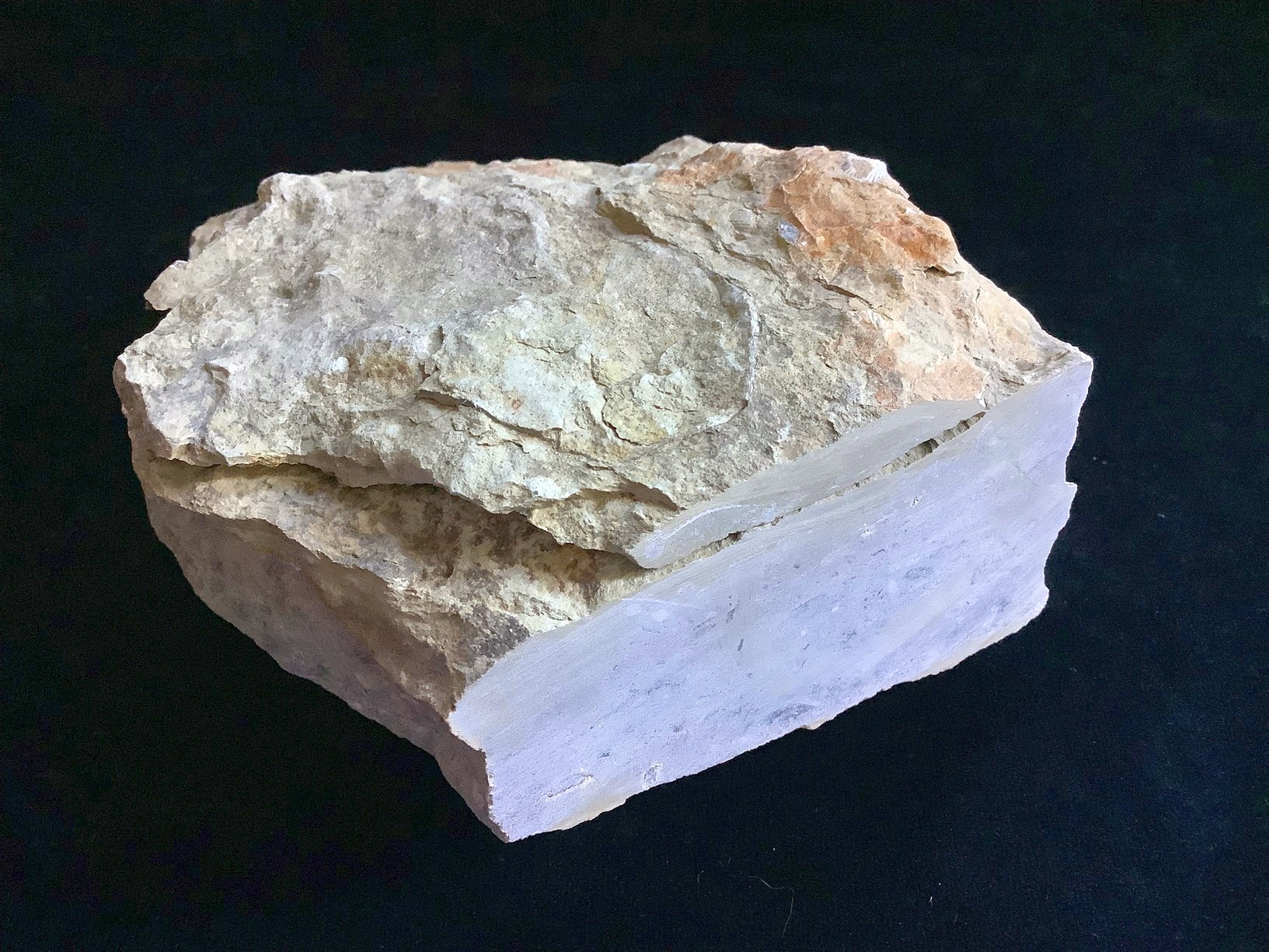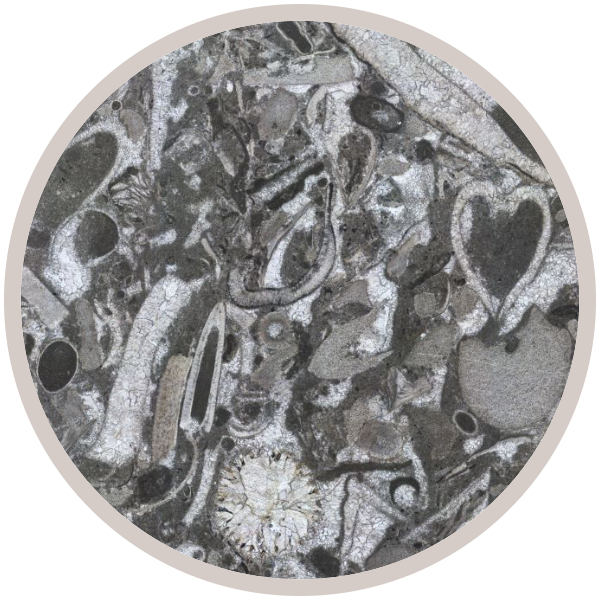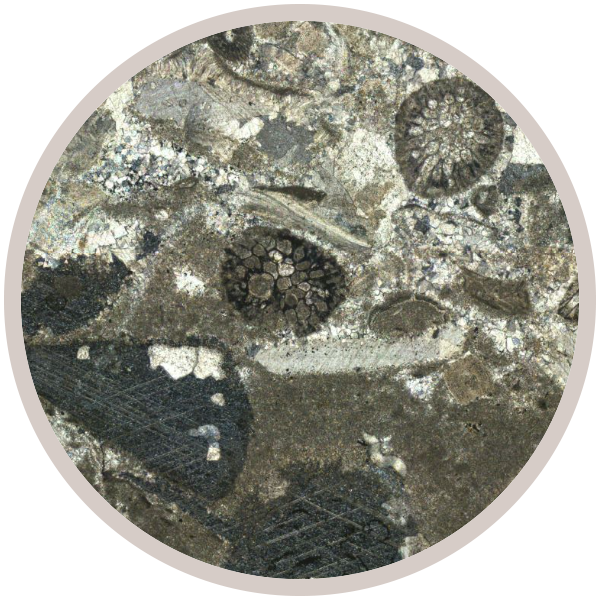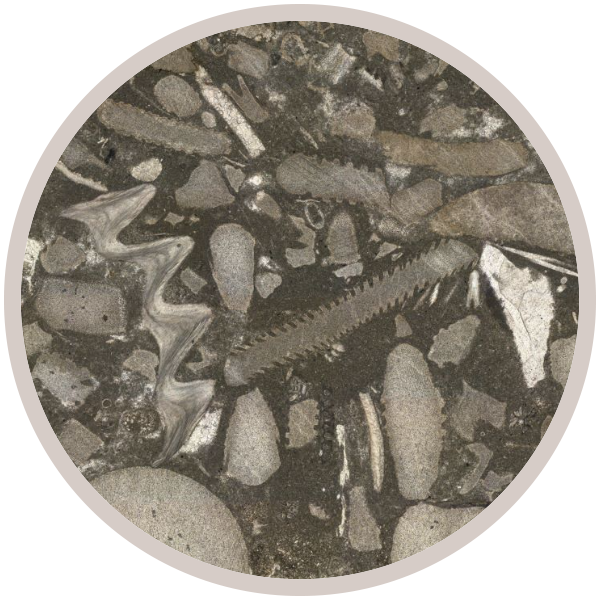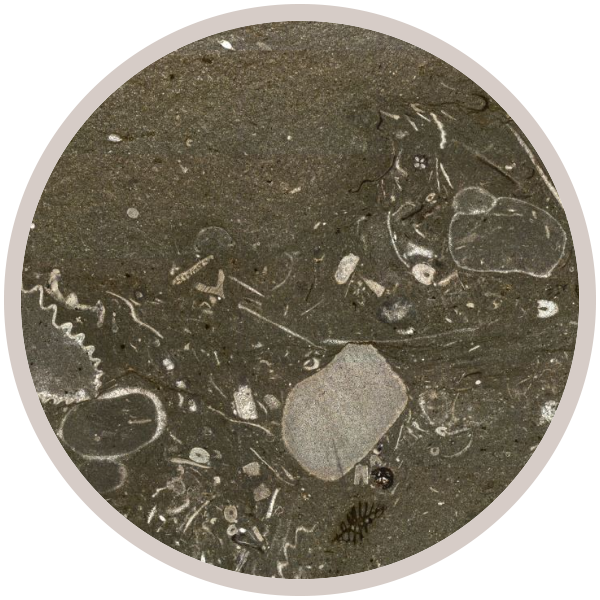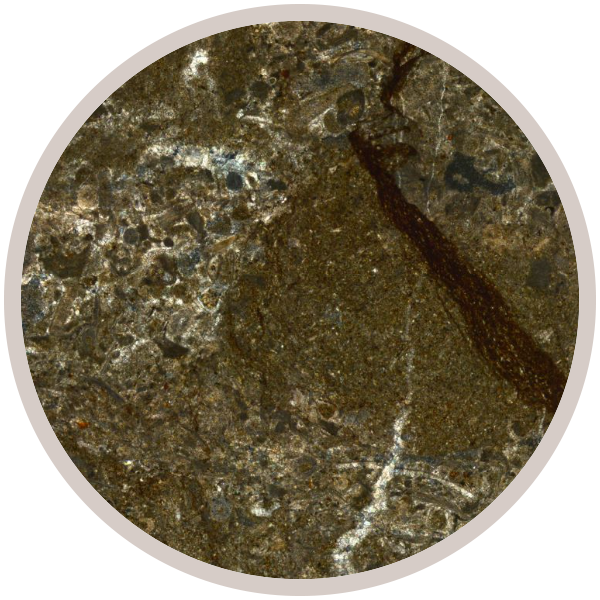
Fact sheet
The nodular appearance in the field of this Silurian (Wenlock) age limestone is displayed well in this thin section, with patches of rock crowded with bioclastic material interspersed with irregular domains of dark brown, fine-grained lime mud (micrite). This sample was collected from an exposure near a small adit with a fault.
The limestone was laid down in a shallow tropical sea south of the equator around 428 million years ago. The area of Wren's Nest featured small coral reefs teeming with life, separated by shallow banks and troughs of lime mud. The rocks at this locality have been described as a 'death assemblage', which is borne out by the abundance of well-preserved bioclasts in this thin section.
The limestone reefs nearby were home to compound and solitary corals, bryozoans, crinoids, brachiopods, gastropods, cephalopods and trilobites. The texture of this sample suggests a rapid influx of shelly debris washed into a muddy trough alongside the reef. Bioclasts include fragments of crinoid stem, echinoderm plates, fibrous and ribbed brachiopod shells and gastropods; corals and bryozoans are rare. Many shells have been replaced by sparite and there is a relatively high proportion of sparite associated with the bioclasts. Some gastropods are partly infilled by micrite but there is no consistency in the orientations of the infills, supporting the impression that the shells were tumbled about chaotically during deposition.
This sample was collected as part of the 'Macro to Micro' project.
This Collection showcases the geodiversity of a classic geological site: the Wren's Nest National Nature Reserve in the West Midlands.
As well as displaying thin section and hand specimen views along with information setting them in the context of their landscapes, we also include perspectives and creative responses to the geological heritage of the sites from the local community.
| Explore the stories of the rock layers at Saltwells and Wren's Nest NNRs, designed by students at King Edward VI School, Stourbridge: |
This Collection was made possible by funding awarded to the 'Macro to Micro' project by the Natural Environment Research Council (NERC) under their 'Growing Roots' scheme.
